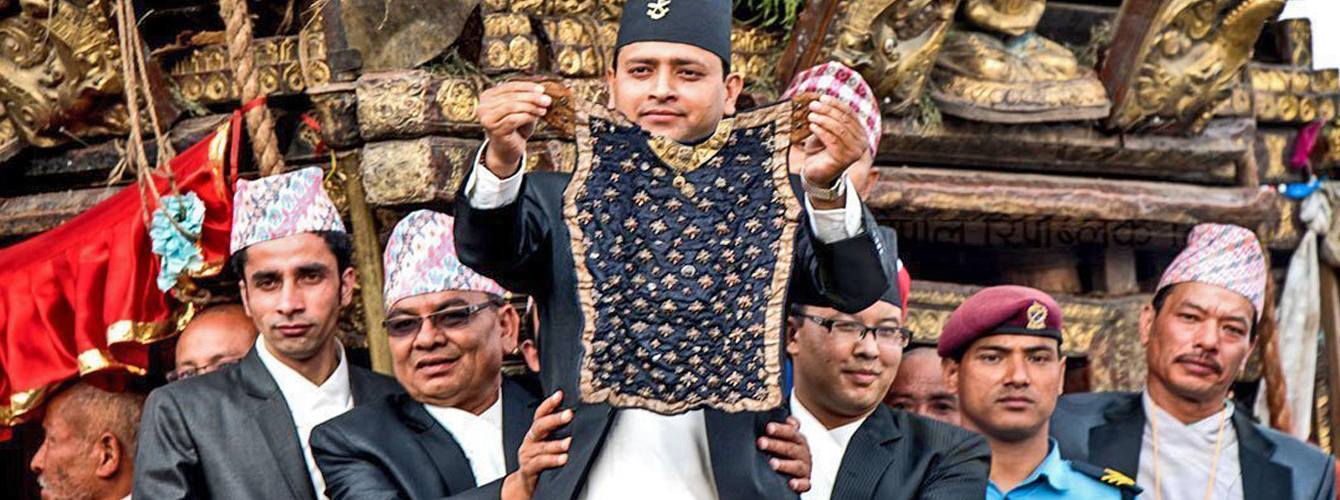
Bhoto Jatra ( Rato Machhendranath (Bunga Dyah) Jatra), a month-long celebration, and it is the Chariot procession of Rato Machhendranath Jatra. It takes place at Jawalakhel western side of Patan and displays a precious sacred Bhoto (Vest) to the public by the official. The festival was starting by King Narendra Deve (640-683 AD).
Rato Machhendranath (Bunga Dyah) Jatra is the chariot procession to honor the Rato Machhendranath, the god of rain. Rato Machhendranath means Red Machhendranath is a reference to the color of the god’s image. It is one of the longest and greatest religious festivals in Nepal. The festival begins according to the lunar calendar, on the 4th day of the bright fourth night of the Bachhala, the 7th month in the lunar Nepal Sambat. The 60-feet tall wooden wheeled Chariot fabricated from Bamboo poles raises. After the Chariot is erected, the Image of Rato Machhendranath from his temple is installed in the Chariot. The Chariot dragged through the streets of Patan that lasts a month. The procession starts from Pulchok and passes through Gabahal, Hakha, Sundhara, Lagankhel, and finally reaches to Jawalakhel.
According to the legend, it is stated that when Guru Gorakhnath came to Patan, he didn’t get the food from the locals. He found the Nagas (Serpents) responsible for rain in the valley. He captured all and sat on them, started meditating. When the Nagas were under the control of Guru Gorakhnath they could not make rain, and the valley suffered from severe drought. Then King Narendra Dev was asked to invite Machhendranath, a teacher of Gorakhnath from Assam (India), in hopes to end the drought. When Gorakhnath heard his Guru arrived in Patan, he decided to visit his Guru, and therefore the Nagas were free, and then the valley had plenty of rain. From that day, the locals started to worship Machhendranath for saving them from the drought, and King Narendra Dev had started the festival of Rato Machhendranath.
Final and closing day of the festival, the precious sacred vest (Bhoto) shows to the public in the presence of the head of the country, the Prime minister, ministers, and senior government officials. Bhoto Jatra, means “festival of the vest” and the priests (astrologers) community choose an auspicious day to hold the Bhoto Jatra festival.
According to legend, a local Jyapu farmer lost the vest which he had received as a gift from the serpent god Karkotaka Naga for doing him a favor. One day, when the farmer came to Jawalakhel to watch the chariot procession festival, he saw someone wearing his missing Vest. Then the quarrels began over the Vest. But they didn’t have evidence to prove the ownership. At last, they agreed that the Vest would be kept with Rato Machhendranath until someone brings rightful proof to claim the ownership. Since then, annually the precious Vest has been showing to the public.
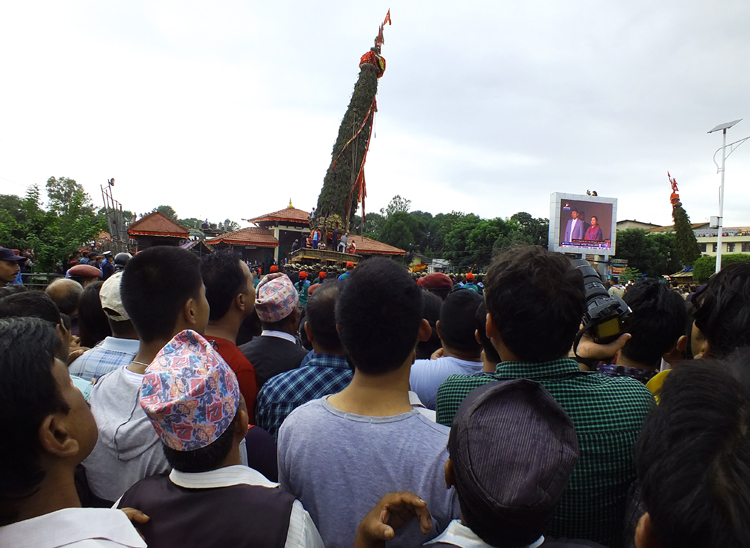
Written By: Ambar Tamang
Founder/Guide: Blossom Expeditions
P. O. Box No: 21101, Kapan-12, Kathmandu, Nepal.
Telephone: 977-01-4810388
Mobile: 977-9851123762
WhatsApp/Viber: 977-9841454462
ambartg@yahoo.com
blossomexpeditions@gmail.com
www.blossomexpeditions.com
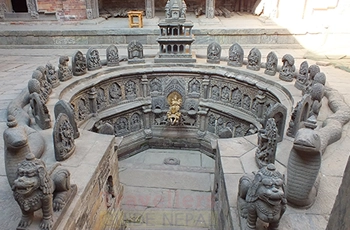
Introduction to the Patan Heritage Walking Tour A typical Patan Day Tour often highlights the most famous attractions, such as Patan Durbar Square, the Golden Temple, and the Mahabouddha Temple. However, for travelers seeking a deeper connection with local life, ancient art, history, and culture, the city of Patan reveals an abundance of hidden treasures. For this rea...
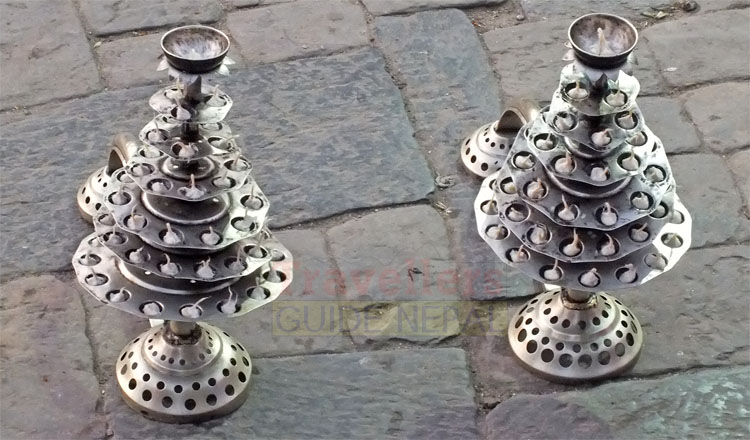
The Bagmati Aarti at Pashupatinath Temple in Kathmandu is one of the most mesmerizing and important rituals performed in the Hindu religion. The holy Bagmati river, which flows through the temple area, has great significance in Hindu beliefs. It is believed that taking a holy bath in the river will wash away one's sins. Aarti Puja is a Hindu ritual performed around the world...
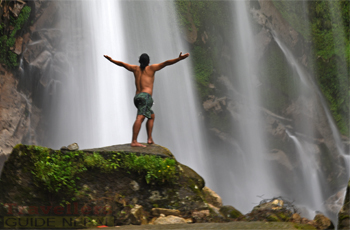
If you want to get rid of the hustling and bustling city for a while. Want to get lost in the beauty of nature for a while. Like to taste the local food, want to learn people's daily lifestyle of the countryside. The one or two-night trip to Kulekhani-Chitlang Village Tour can be suitable for you....
Comments